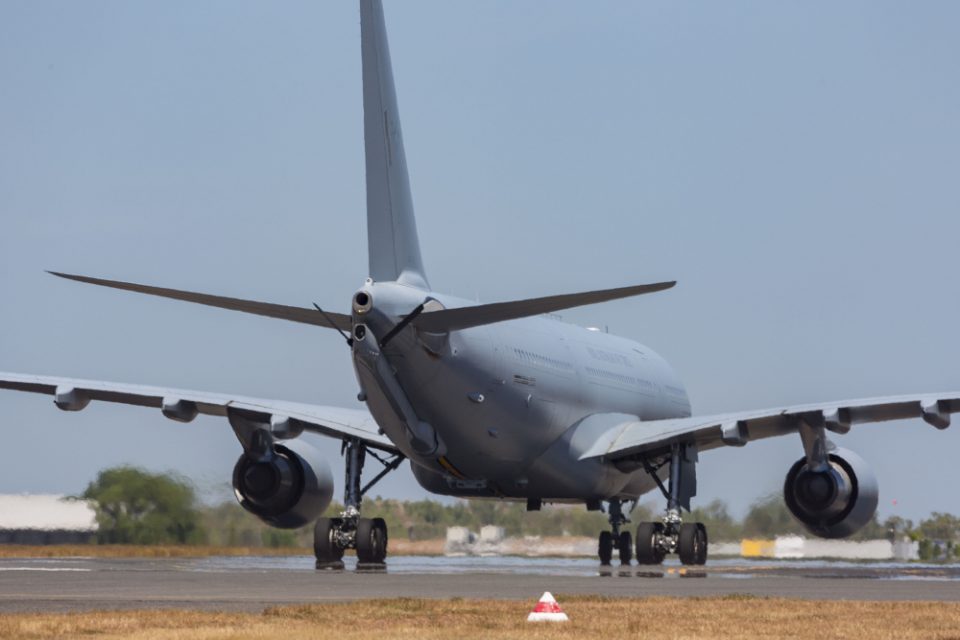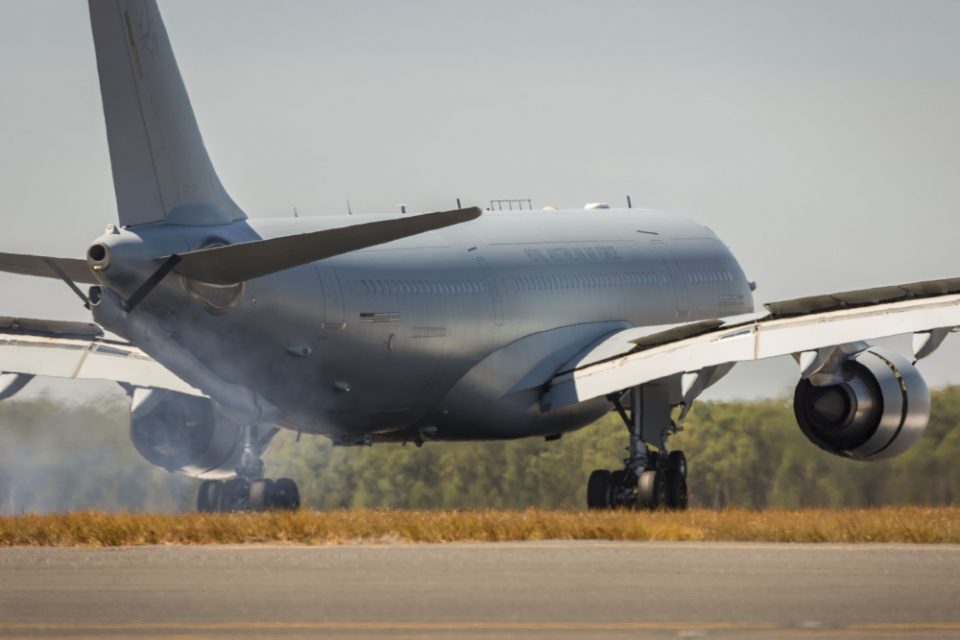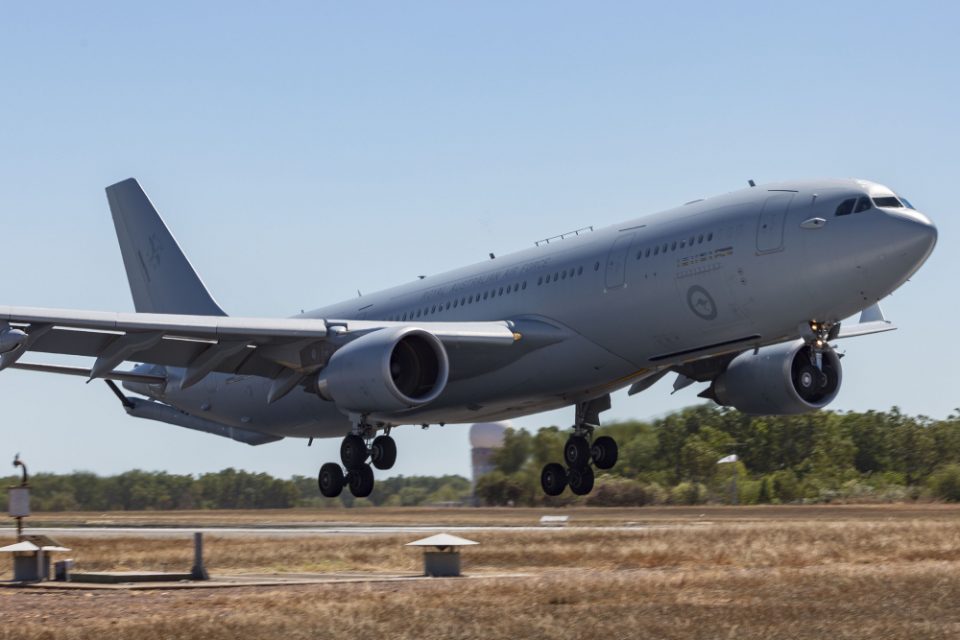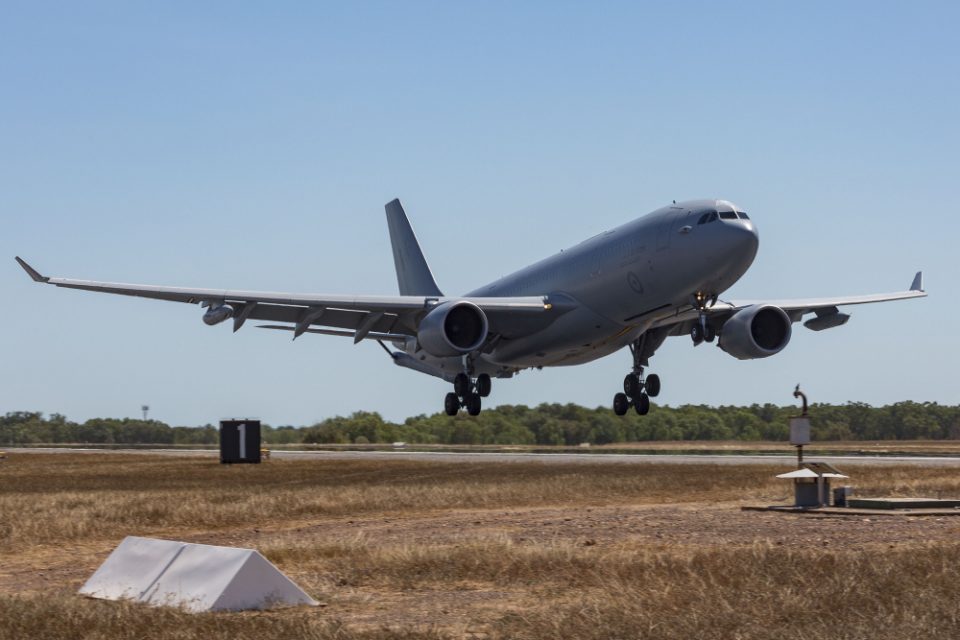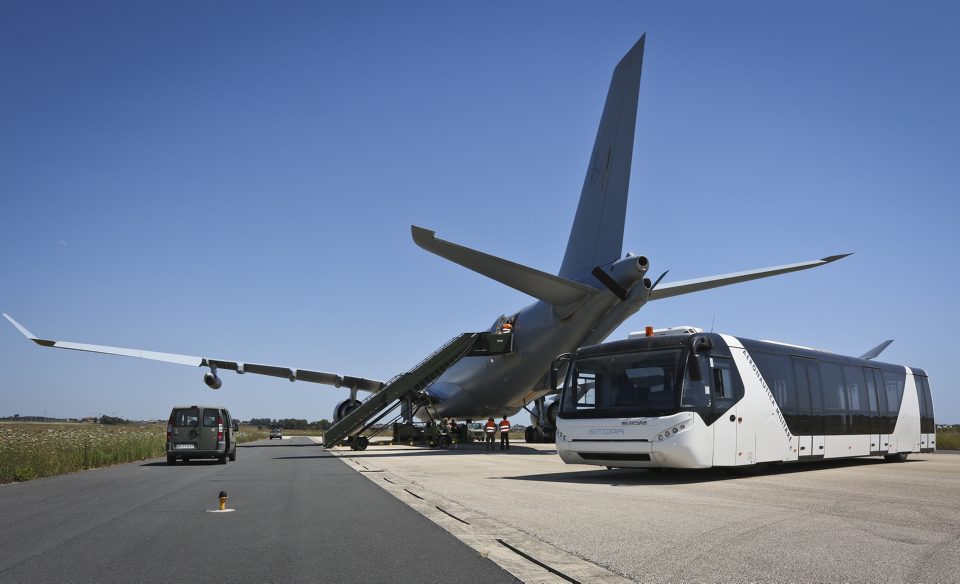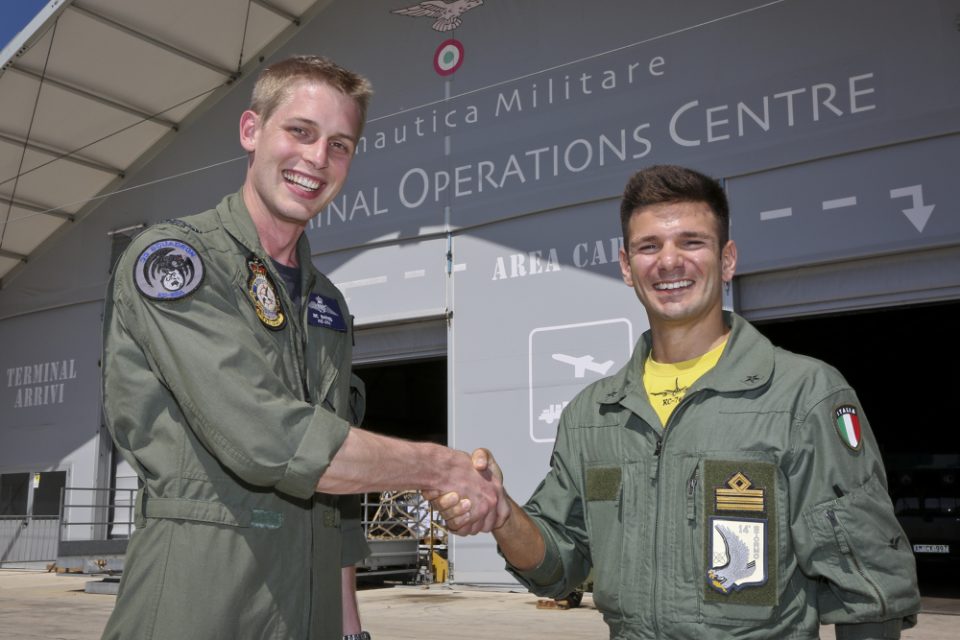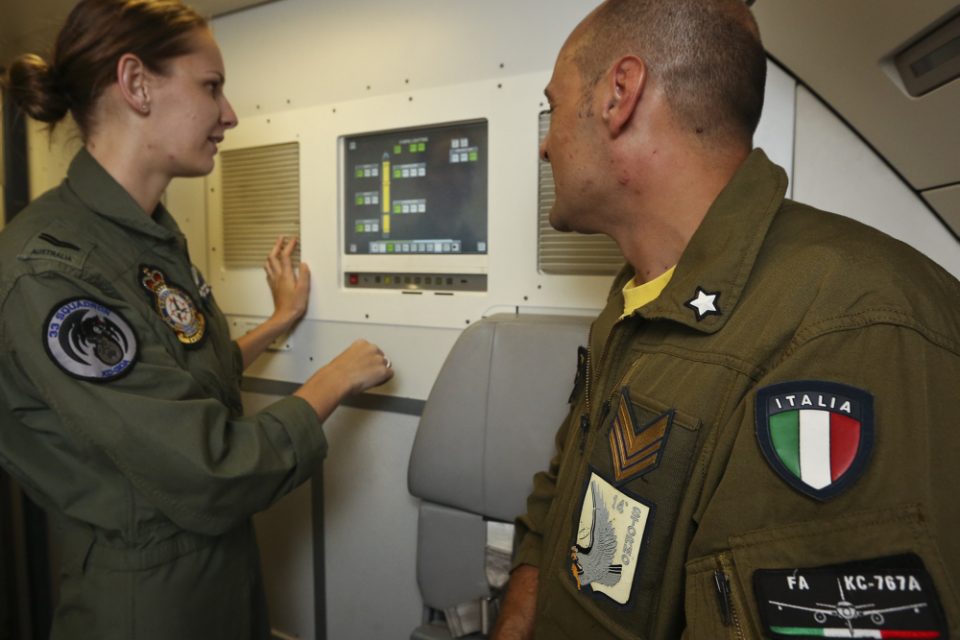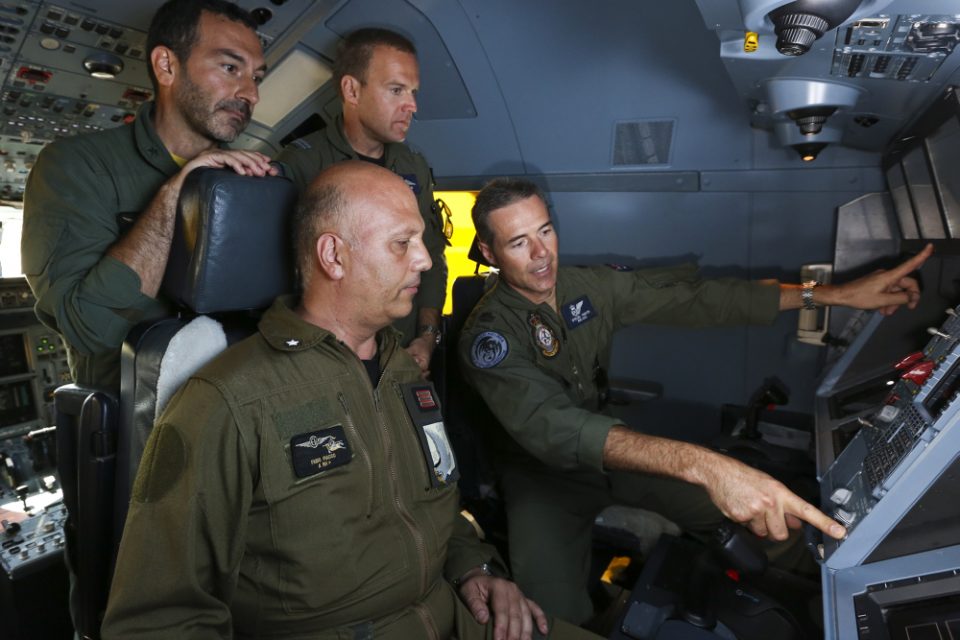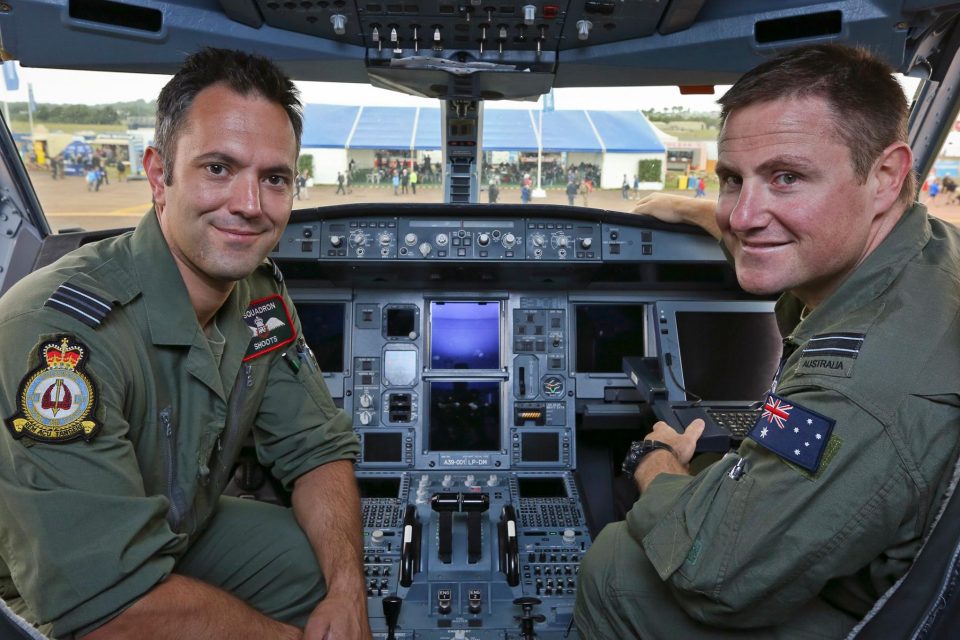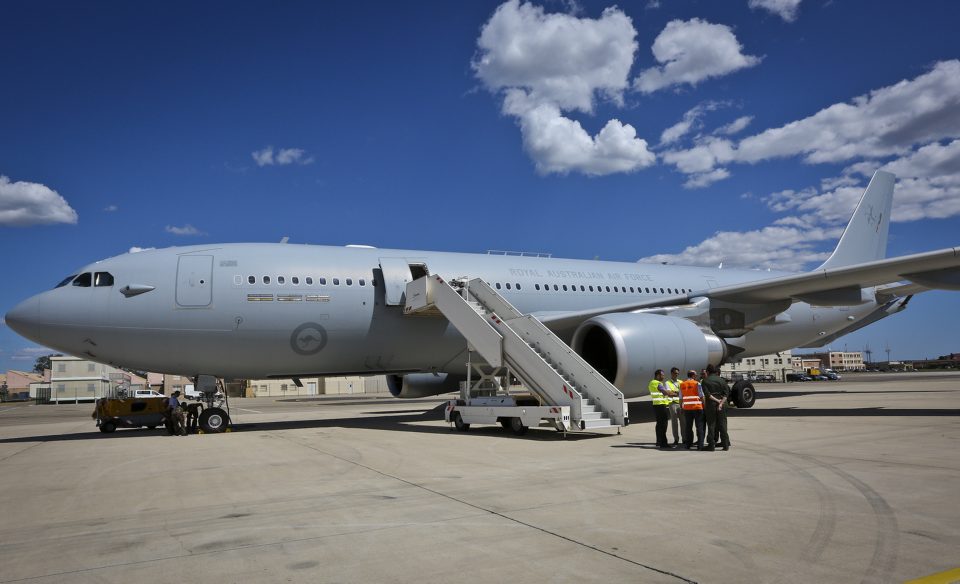2016-10-25 Recently, the Australian KC-30A Multi-Role Tanker fleet has now been flown more than 20,000 flying hours.
The milestone was reached on a mission from Yokota Air Base in Japan to Kuala Lumpur in Malaysia on October 19, 2016.
According to the Australian Ministry of Defence:
Wing Commander Rob Williams, the Commanding Officer of No. 33 Squadron, said this was a memorable achievement for the Royal Australian Air Force.
“Each person involved with the KC-30A, from the transition into service to our achievement of 20,000 flying hours, should be proud of being a part of the KC-30A story,” Wing Commander Williams said.
“The milestone was reached on an international flight supporting two completely different missions, which further demonstrates the value of the aircraft.
“The KC-30A has transformed and enhanced the global reach of the ADF and will continue to mature in its role and application in the years to come.”
The press release from the Australian Ministry of Defence went on to provide an overview on the KC-30A within the Australian Defence Force.
The Air Force has five KC-30A aircraft in service operated by No. 33 Squadron from RAAF Amberley in South East Queensland. The aircraft was first flown by Air Force in September 2011.
KC-30A aircraft continue a high tempo of operations participating most recently in Exercise PITCH BLACK where it performed as a force multiplier conducting air-to-air refuelling for numerous fighter aircraft.
Throughout its 20,000 flying hours, the KC-30A fleet has achieved a number of firsts including a record for the number of passengers carried on an Air Force aircraft; 220 cadets from the Australian Defence Force Academy in March 2012.
The KC-30A’s most well known deployment is Operation OKRA in the Middle East Region.
The aircraft has provided over 36 million litres of fuel to Australian and coalition aircraft.
The KC-30A is fitted with two forms of air-to-air refuelling systems — an Advanced Refuelling Boom System mounted on the tail of the aircraft and a pair of refuelling pods underneath each wing. These systems are controlled by an Air Refuelling Operator in the cockpit, who can view refuelling on 2D and 3D screens.
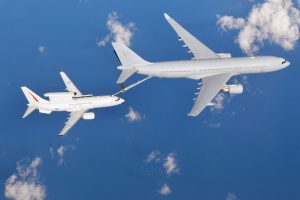
Having a fuel capacity of more than 100 tonnes, a KC-30A can remain fly 1800km from its home base with 50 tonnes of fuel available to offload. In its transport role, the KC-30A is capable of carrying as many as 270 passengers and comes with under-floor cargo compartments which can accommodate 34 tonnes of cargo.
Advanced mission systems are also fitted to the aircraft. They include the Link 16 real-time data-link, military communications and navigation suites, and an electronic warfare self-protection system for protection against surface-to-air missiles.
During our interview with Wing Commander Williams during a visit to Williamtown in August 2016, he underscored how the reach and range of the dyad of C-17 and KC-30A had transformed the ADF.
“The idea a decade ago that we could effectively lodge a force anywhere in Europe and operate at short notice was unimaginable.
“For example, in our response to the downing of Malaysian airlines Flight 17, the KC-30 and C-17 force, in terms of seat miles and ton miles, did more lifting in 15 days than Australia did in the Berlin Airlift and we were in the Berlin Airlift for a significant period of time.”
https://sldinfo.com/visiting-amberley-airbase-australia-an-update-from-the-86th-wing-commander/
And in an interview with No. 33 Squadron at Amberly Airbase in August, the leadership of the squadron highlighted the significant progress, which the tanker has made in enabling the ADF.
Question: How has the plane and crews performed to date in operations in the Middle East?
Answer: “In the Middle East, we’re seeing reliability, or mission dispatch rates, up near 96%.
“Some months it’s 100%. From a maintenance perspective, we’re probably looking at a serviceability rate of about 97%-98% for our MER ops.”
Question: In your view, why has the plane performed as well as it has?
Answer: “I haven’t really considered that before but it is an aircraft built on a proven and mature platform, an A330-200.
“It’s been around for many years. It retains much of its green aircraft architecture.
“That’s why we see those dispatch rates.
“It largely provides almost airline-like dispatch rates.”
https://sldinfo.com/re-visiting-33rd-squadron-an-update-on-the-kc-30a/
The first slideshow highlights the KC-30A in the recent Pitch Black 2016 exercise and is credited to the Australian Ministry of Defence.
The second slideshow shows the KC-30A visiting Europe in July 2016 first in the UK, then in France and then in Italy.


